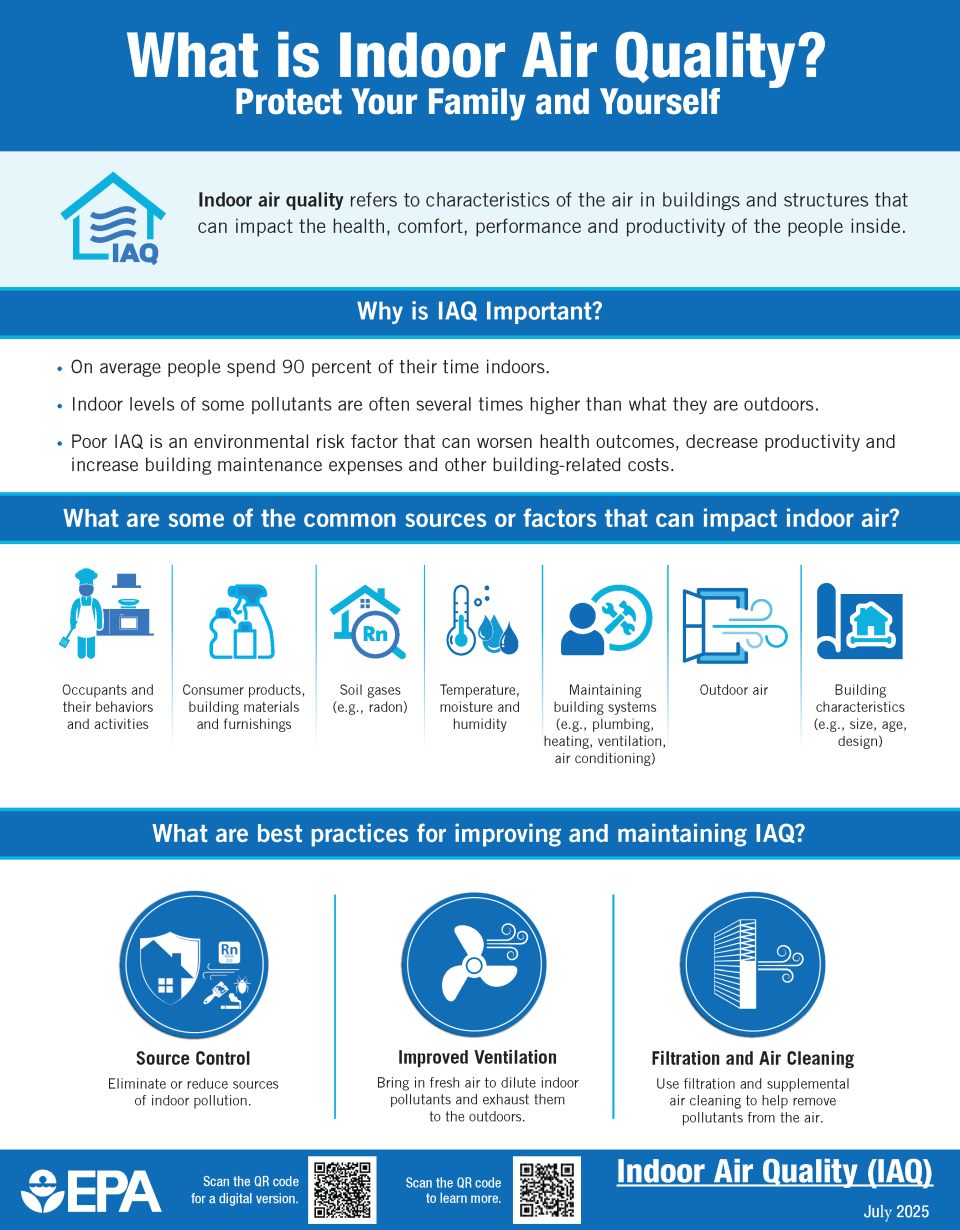Factsheet: What is Indoor Air Quality?
Información disponible en español
This factsheet discusses what is indoor air quality, common sources and factors that can impact indoor air quality, and best practices for improving and maintaining good indoor air quality.
- Download the factsheet: Factsheet: What is Indoor Air Quality? (pdf)

Text Version of the factsheet
What is Indoor Air Quality?
Protect Yourself and Your Family
Indoor air quality refers to characteristics of the air in buildings and structures that can impact the health, comfort, performance and productivity of the people inside.
Why is IAQ Important?
- On average people spend 90 percent of their time indoors.
- Indoor levels of some pollutants are often several times higher than what they are outdoors.
- Poor IAQ is an environmental risk factor that can worsen health outcomes, decrease productivity and increase building maintenance expenses and other building-related costs.
What are some of the common sources or factors that can impact indoor air?
- Occupants and their behaviors and actions.
- Consumer products, building materials, and furnishings.
- Soil gases, such as radon.
- Temperature, moisture and humidity.
- Maintaining building systems, such as plumbing, heating, ventilation and air conditioning.
- Outdoor air.
- Building characteristics, such as size, age and design.
What are best practices for improving and maintaining IAQ?
- Source control: Eliminate or reduce sources of indoor pollution.
- Improved ventilation: Bring in fresh air to dilute indoor pollutants and exhaust them to the outdoors.
- Filtration and air cleaning: Use filtration and supplemental air cleaning to help remove pollutants from the air.
